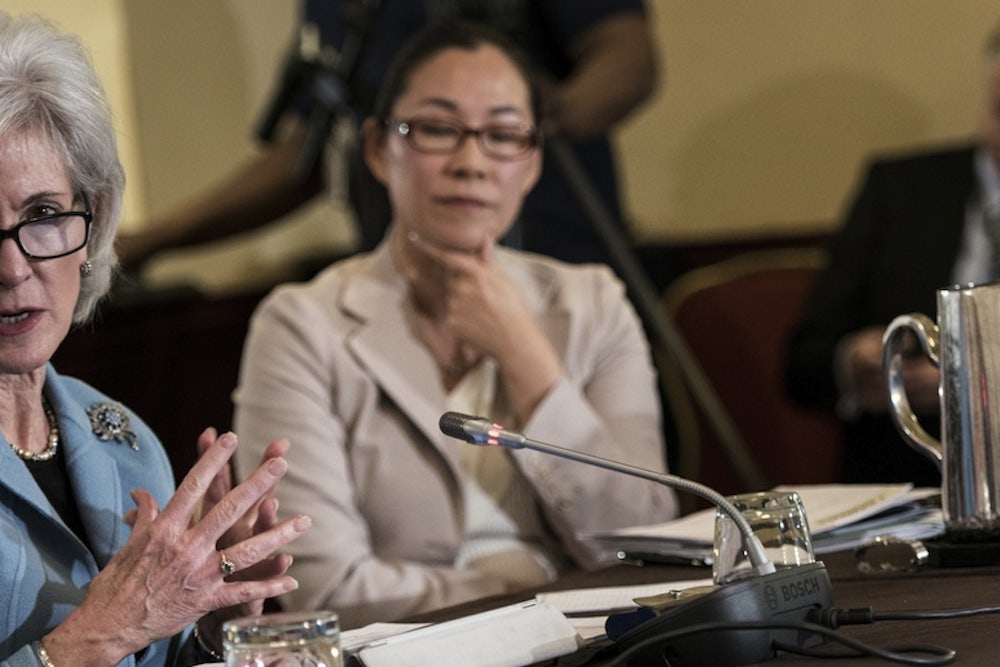The Department of Health and Human Services on Friday released some Obamacare news. More than 3 million people have now selected a private health plan through either healthcare.gov or one of the state marketplaces.
As usual, we shouldn't read too much into the figure. It doesn't mean that 3 million people are newly insured, because some of those people had coverage before. And it doesn’t even mean 3 million people actually have private coverage through Obamacare, because some of the people who selected plans haven’t actually paid premiums yet.
But the new figure does mean that people are using the system, in large numbers. And while total enrollment is still short of what initial projections had suggested, the rate of enrollment seems to be right in line with what the experts, including government forecasters, had expected. A now-infamous internal HHS memo had predicted that a little more than 1 million people would sign up for coverage in January. The newly released data means that about 800,000 have signed up this month—and there’s still a week to go.
To be clear, those projects were never that scientific. Experts basically extrapolated from past programs that made for highly imperfect comparisons. At this point, most close observers would be surprised if, by the end of March, total enrollment in private plans reaches 7 million, which was what the Congressional Budget Office and other experts had expected.
But healthcare.gov was barely functional for October and most of November. Republican officials in some states have been doing their best to undermine the law. Allow for those facts, and the enrollment pattern looks pretty similar to what the prognosticators had thought it would, as this graph from Sarah Kliff from the Washington Post Wonkblog shows:
Linda Blumberg, senior fellow at the Urban Institute, gave me a similar take over e-mail:
This is encouraging, for sure. More will continue to come through throughout the year due to "qualifying events"—job or household or other income changes or changes in availability of health insurance. So the fact that the numbers continue to climb is encouraging that the systems are improving and information is being dispersed. Obviously there are going to be significant differences across states, both due to some persistent technical problems, but also differences in the investment of resources for outreach and enrollment support, and those will be very telling.
There are no guarantees that enrollment will continue to track projections so closely. And enrollment is just one way to measure the law’s progress. It surely matters just as much, if not more, how people feel about their new coverage—and how well it works. Earlier this week, Steve Friess, a freelance writer in Michigan, chronicled an unbelievably frustrating saga of trying to get coverage through healthcare.gov—and discovering that a plan falls well short of expectations. Yes, the article appeared in the Daily Caller. Read it anyway. It's one story but, I'm sure, not the only one like it.
But enrollment statistics still matter. And the closer they come to the initial projections, the more realistic other predictions about the law seem. Given the lack of real-time data on the law's effects, that's reassuring.
